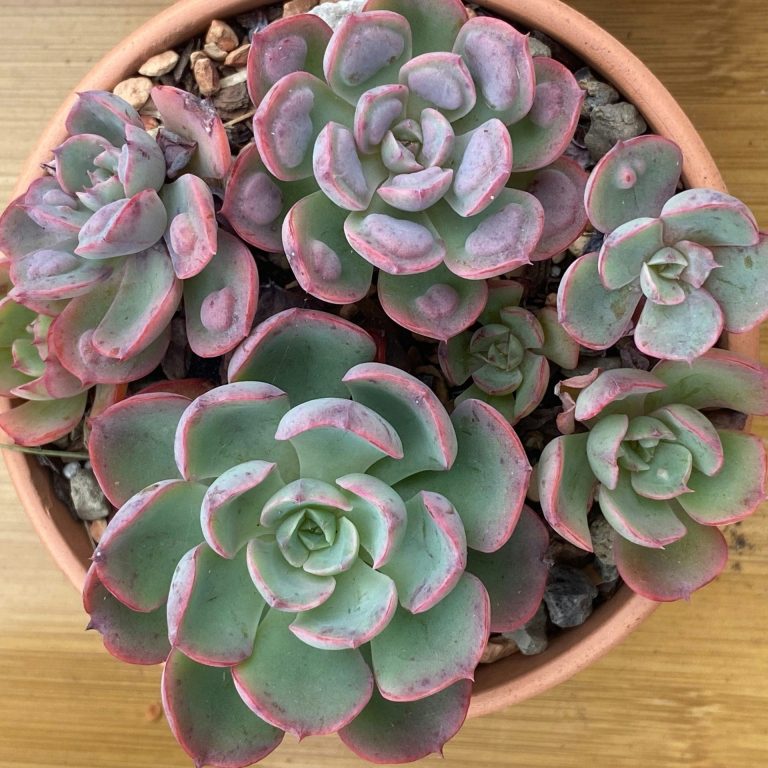A weak solution of fertilizer added to the water at each watering will be sufficient.
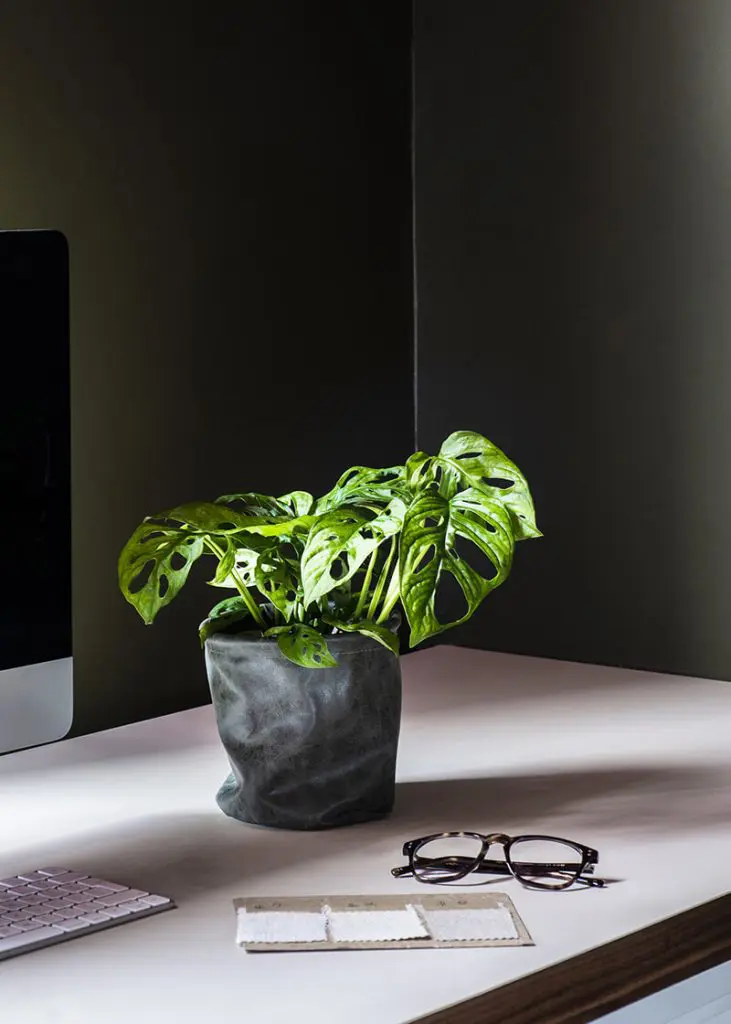
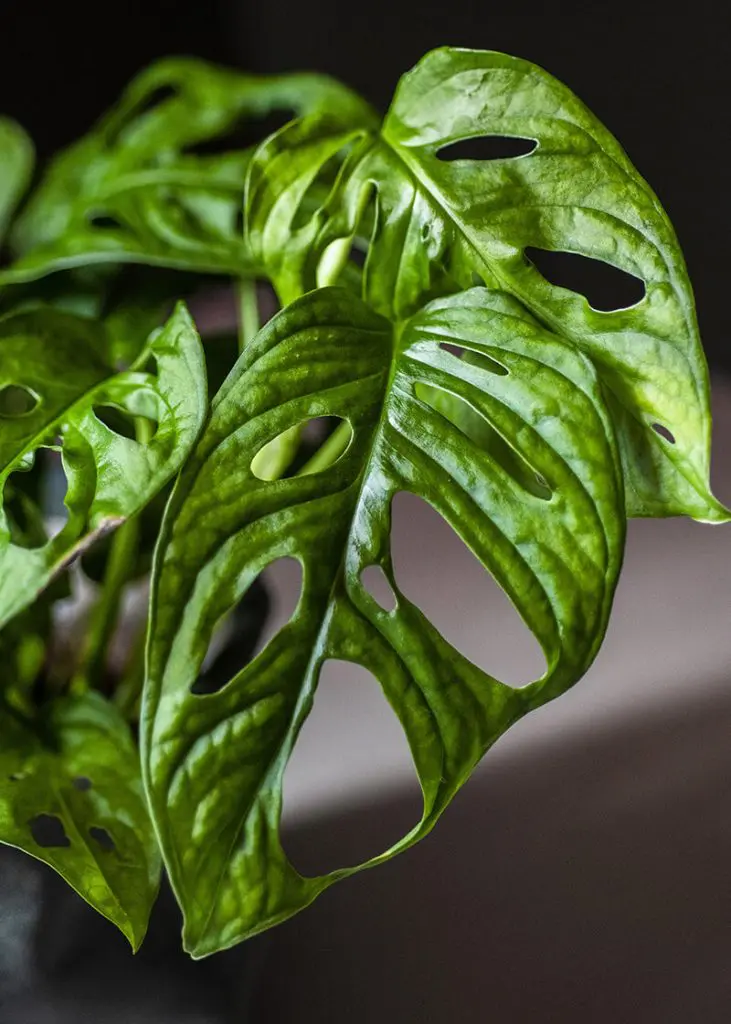
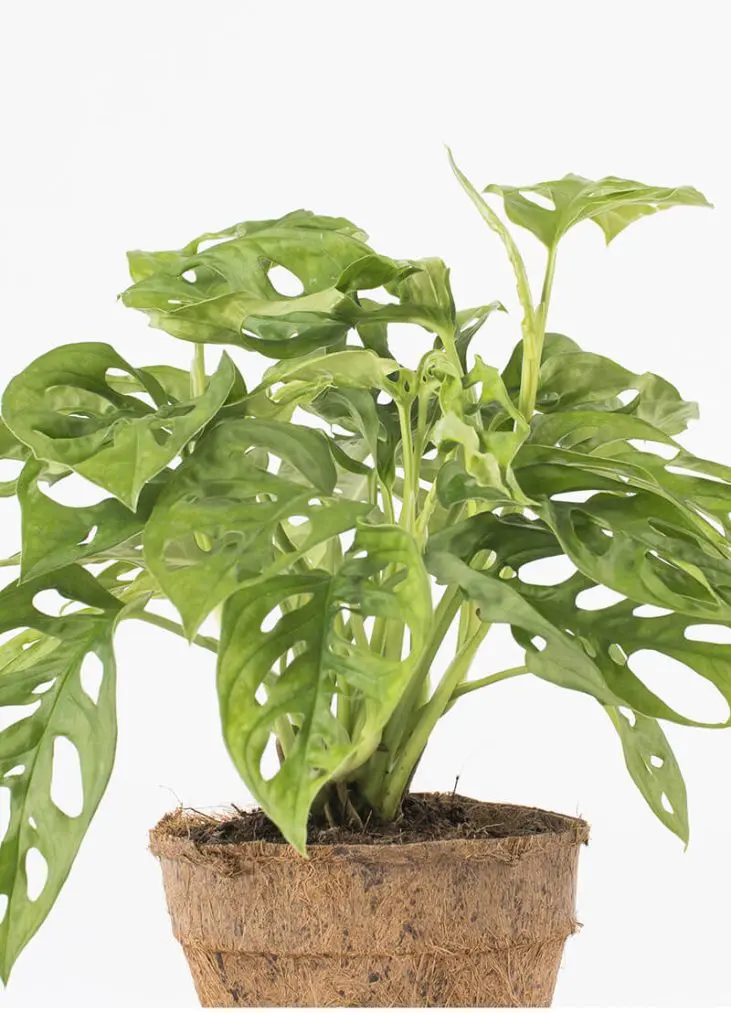
Monstera ‘Monkey leaf’, known as Monstera adansonii or Adanson’s monstera, is a smaller version of the famous Swiss Cheese Plant (Monstera deliciosa).
Latin name
Monstera adansonii
Pronunciation
(“mon-STIR-rah ad-an-SO-nee-eye”)
Common name
Adanson’s monstera
Origin
Northern half of South America, most of Central America and the Caribbean
This plant species has only recently gained popularity as a houseplant having previously been considered tricky to keep. It is quite a fast-growing house plant, with new leaves produced every few weeks. It can be trained around a moss pole to make a climbing plant or allowed to trail over the edge of its pot.
A climbing plant with deep green leaves and distinctive holes in the leaves (which allow wind to pass through the foliage without risking too much damage), this plant spends its life climbing up the trunks and branches of trees in the forests of Central America and the Caribbean.
The leaves are smaller, rounder, thinner and less glossy than Monstera deliciosa.
Did you know?
Monstera adansonii gets its playful name from the oval holes, or fenestrations, that develop in its leaves—said to resemble the marks left by a curious monkey.
Monstera adansonii is toxic to pets and humans if ingested. It contains calcium oxalate crystals that can cause mouth irritation, drooling and stomach upset in cats, dogs and people.
caring for your plant

Light
Low to medium light.

Watering
Keep the soil moist, but not wet and allow to dry out a little between watering. Wet soil will cause the roots to rot.

Pruning
Leggy stems can be cut back to encourage branching and more bushy growth – always use a sharp knife or secateurs.

Feeding

pest & diseases
Generally pest free, but mealybugs and two-spotted spider mites can be an occasional problem. Keep the plant misted to deter spider mites, and remove mealybugs when you see them by wiping off with a damp cloth or paper towel.
Our plants are grown in Ecoponic, an alternative to soil. Officially known as a vulkaponic substrate, it replaces traditional compost with a clean, mineral-based medium that helps protect peatlands.
According to the IUCN UK Peatland Programme, “A loss of only 5% of UK peatland carbon would be equal to the UK’s annual greenhouse gas emissions.” As well as storing carbon, the natural wetlands where peat is found are critical to the survival of plants and wildlife. Ecoponic also improves plant health and uses water more efficiently.
Find out more about Ecoponic here.

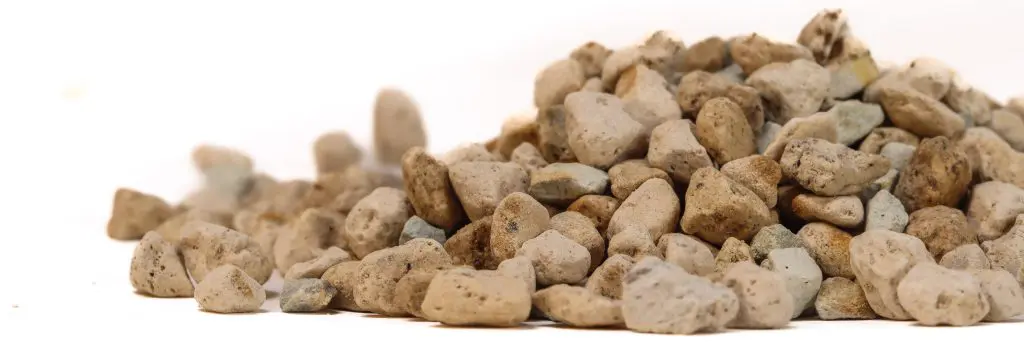
Buy one of my cousins from the nursery
Did you know?
Research from the University of Exeter found that offices with plants can increase productivity by up to 15% while also improving concentration and job satisfaction.
Plantopedia is brought to you as part of our Engage & Bloom workplace experience program.
explore more
Why not continue your journey through the plant world. Explore more plants, their stories, habitats and the benefits they bring to spaces.


